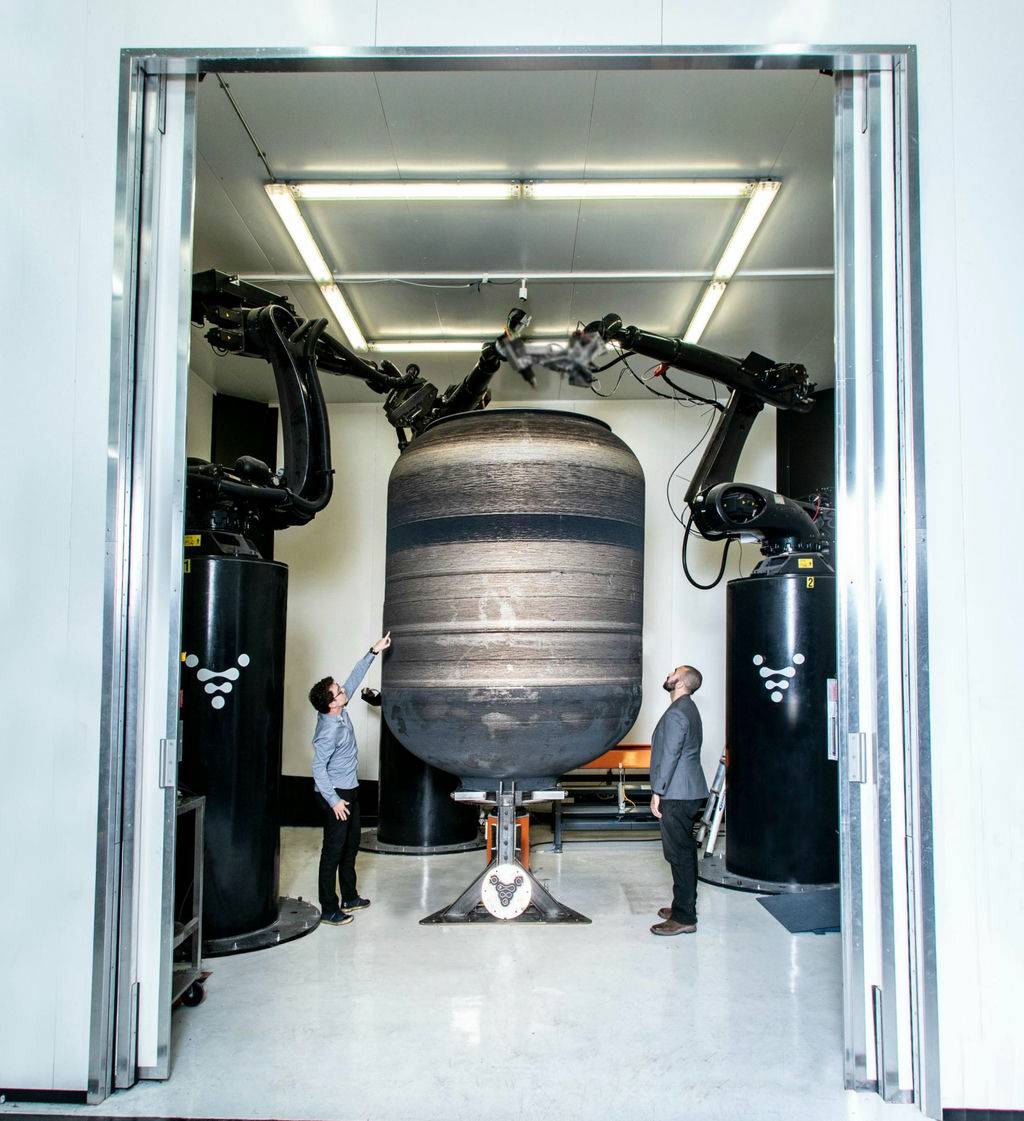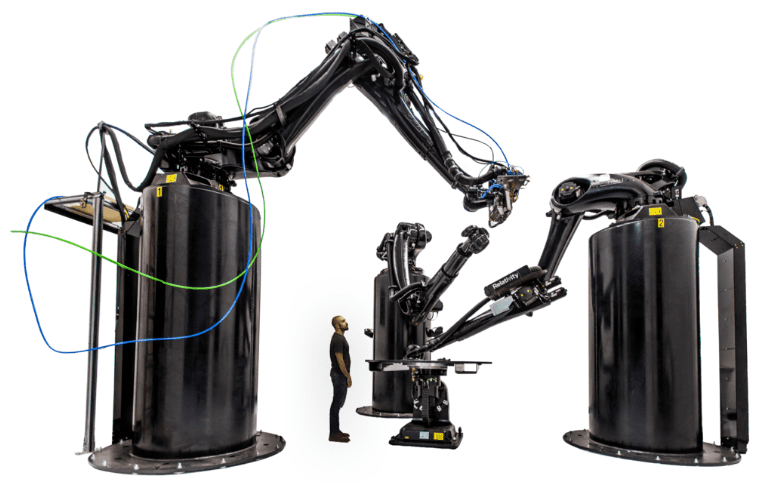[ihc-hide-content ihc_mb_type=”show” ihc_mb_who=”reg” ihc_mb_template=”3″ ]
[vc_row][vc_column][vc_column_text]Credits – www.3dprint.com
The company’s massive Stargate 3D printer utilizes 18-foot-tall robotic arms equipped with lasers that can melt metal wire. Those robotic arms have the ability to stream about eight inches’ worth of metal onto a large turntable in just a second’s time. Directed by custom software, the robotic arms are capable of producing the entire body of the rocket in one piece.
Using a giant 3D printer allows Relativity Space to reduce the part count of a typical rocket from 100,000 to 1,000. This, needless to say, greatly saves on time, labor and money, which in turn saves customers millions of dollars per launch. Relativity intends for its rockets to carry large payloads, too, up to the size of a small car, which is six times the capability of its competitors, according to the company.
 Relativity is a young company, founded in 2015, and just this year completed its Series B funding. It has already accomplished a great deal with the Stargate 3D printer, however, and its latest milestone was the 3D printing of an 11-foot-tall aluminum fuel tank. The 3D printer worked for three weeks to complete the tank, which will next be taken to NASA’s Stennis Space Center in Mississippi. Relativity Space signed an agreement with NASA for exclusive use of Stennis Space Center’s 25-acre E4 Test Complex. The facility also includes four large test cells rated for entire vehicles and engines and 15,000 square feet of specialized infrastructure. Relativity is investing its own capital to build upon the existing site, and is creating a permanent team to lead testing operations.
Relativity is a young company, founded in 2015, and just this year completed its Series B funding. It has already accomplished a great deal with the Stargate 3D printer, however, and its latest milestone was the 3D printing of an 11-foot-tall aluminum fuel tank. The 3D printer worked for three weeks to complete the tank, which will next be taken to NASA’s Stennis Space Center in Mississippi. Relativity Space signed an agreement with NASA for exclusive use of Stennis Space Center’s 25-acre E4 Test Complex. The facility also includes four large test cells rated for entire vehicles and engines and 15,000 square feet of specialized infrastructure. Relativity is investing its own capital to build upon the existing site, and is creating a permanent team to lead testing operations.
The agreement between Relativity and Stennis Space Center is Stennis’ first ever and will be in place for 20 years. Relativity Space will use the site to carry out complete development, qualification and acceptance testing of the Terran 1 rocket, a launch vehicle designed from scratch for constellation deployment and resupply. According to Relativity, the rocket will be one of the most cost-effective launch vehicles in the world.
Over the next year or two, Relativity Space plans to spend its time working on the development of the Terran 1’s first stage. The company is aiming for late 2020 or early 2021 for its first commercial launch. Long-term goals are a bit more out there – Relativity wants to build the first rocket on Mars. But with all the serious talk of going to Mars lately and the continued development of plans for building settlements on the Red Planet, Relativity’s goals may not be so far-out after all.[/vc_column_text][vc_single_image image=”4781″ img_size=”full”][/vc_column][/vc_row]
[/ihc-hide-content]
The AM Chronicle Editorial Team is a collective of passionate individuals committed to delivering insightful, accurate and engaging stories to additive manufacturing audiences worldwide.



